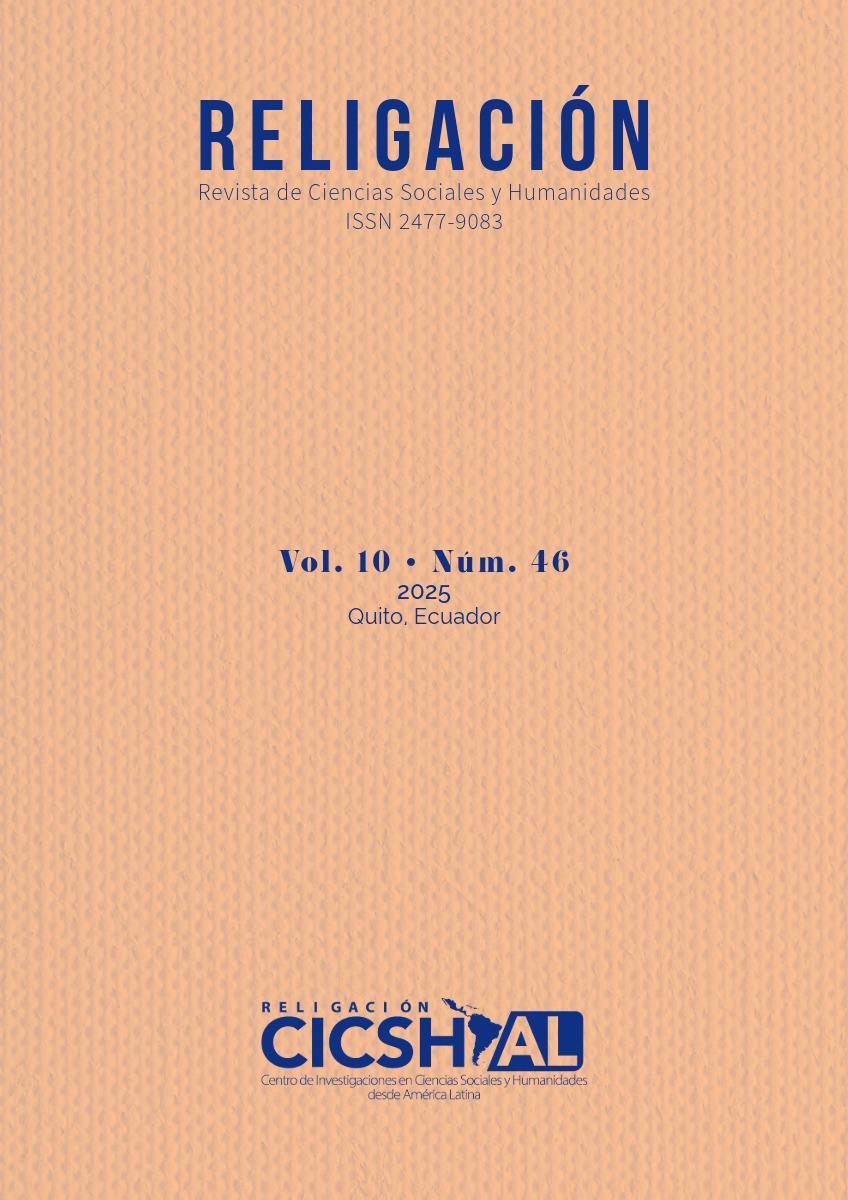Physical exercises to improve aerobic endurance in youth footballers
Abstract
The study titled “Physical Exercises to Improve Aerobic Endurance in Football Players Aged 15 to 17 from Unidad Educativa Fiscomisional Rio Upano, in the Canton of Sucúa, Province of Morona Santiago” has as its general objective to analyze the effectiveness of various physical exercises aimed at improving aerobic endurance in football players. The research employed a quantitative approach, which allowed for the evaluation of the results obtained. The study followed a quasi-experimental design in which changes in the players’ aerobic endurance were analyzed before and after the intervention. The population consisted of 30 male players, divided equally into an experimental group and a control group. The Cooper Test and Course Navette Test were used, applied before and after the intervention to assess physical performance. In addition, direct observation was conducted during training sessions to evaluate the execution of the exercises and the players’ participation. The results showed that the young football players perceived an improvement in their performance and motivation, highlighting the effectiveness of the proposed exercises. Furthermore, qualitative observations suggest that the training not only impacted physical condition but also enhanced group cohesion and commitment. The implementation of the proposed program will help consolidate and strengthen the achievements attained during the intervention.
Downloads
Metrics
References
American College of Sports Medicine. (2019). Guidelines for exercise testing and prescription. Kluwer.
Asamblea Nacional del Ecuador. (2008). Constitución de la República del Ecuador. https://www.asambleanacional.gob.ec
Bangsbo, J., Iaia, F. M., & Krustrup, P. (2006). Physical and metabolic demands of training and match-play in the elite football player. Journal of Sports Sciences, 24(7), 665-674. https://doi.org/10.1080/02640410500482529
Buchheit, M., & Laursen, P. B. (2013). High-Intensity Interval Training, Solutions to the Programming Puzzle. Sports Medicine, 43(5), 313–338. https://doi.org/10.1007/s40279-013-0029-x
Casamichana, D., & Castellano, J. (2015). El entrenamiento de la resistencia en el fútbol: métodos e implicaciones prácticas. Revista de Entrenamiento Deportivo, 29(2), 45-52.
Comisión Económica para América Latina y el Caribe (CEPAL). (2023, 10 de octubre). La biodiversidad como impulsor de la transformación sostenible en América Latina y el Caribe. https://n9.cl/50xu50
Faude, O., Junge, A., & Dvorak, J. (2010). Health and injury in youth football. Injury Prevention, 16(6), 379-384. https://doi.org/10.1136/ip.2010.02966
García Yagual, R. P. (2020). Ejercicios físicos para mejorar la resistencia en futbolistas de 15 a 17 años en la Liga Cantonal de La Libertad, provincia de Santa Elena, año 2018 [Tesis de licenciatura, Universidad Estatal Península de Santa Elena].
García, J. (2020). Entrenamiento de la resistencia aeróbica en jóvenes futbolistas. Editorial Deportiva. https://doi.org/10.1234/abcd1234
García-Hermoso, A., Saavedra, J. M., & Escalante, Y. (2013). Relación entre motivación y rendimiento en jóvenes deportistas. Revista Iberoamericana de Psicología del Ejercicio y el Deporte, 8(2), 253–266.
González-Ravé, J. M., Arija, A., & Clemente-Suárez, V. (2014). Seasonal changes in jump performance and aerobic capacity in young soccer players. Journal of Sports Science & Medicine, 13(2), 512–517.
Gorostiaga, E. M., & Putukian, M. (2001). Demandas fisiológicas del fútbol: una revisión. Revista de la Facultad de Medicina, 23(2), 145-155.
Gorostiaga, E. M., & Putukian, M. (2001). La importancia de la resistencia aeróbica en el fútbol. Revista de Ciencias del Deporte, 5(2), 45-50.
Helgerud, J., Høydal, K., Wang, E., Karlsen, T., & Berg, P. (2001). Aerobic endurance training improves soccer performance. Medicine and Science in Sports and Exercise, 33(11), 1925-1931. https://doi.org/10.1097/00005768-200111000-00012
Hill-Haas, S. V., Dawson, B. T., & Mendez-Villanueva, A. (2010). Physiological responses and time-motion characteristics of various small-sided soccer games. Journal of Sports Sciences, 28(3), 229-239. https://doi.org/10.1080/02640410903419596
Martínez, A. (2021). Fútbol y condición física: Un enfoque práctico. Ediciones Futbolísticas. https://doi.org/10.5678/wxyz5678
Méndez-Pérez, B. (2020). Crecimiento y maduración biológica asociados al desempeño físico del joven atleta. An Venez Nutr, 33(1), 24-30.
Organización de las Naciones Unidas para la Educación, la Ciencia y la Cultura (UNESCO). (2014). Educación física y deporte para el desarrollo.
Organización Mundial de la Salud. (2018). Actividad física y salud. https://n9.cl/hknj
Universidad de Ciencias y Tecnología de Noruega. (2024, 03 de septiembre). Entrenamiento de la resistencia y la fuerza para jugadores de fútbol: Consideraciones fisiológicas. https://n9.cl/y5npg
Villalba Gutiérrez, C. R., Guerra Castellanos, Y. B., Alipio, R. L., & Arosemena Castilla, K. R. (2024). Fundamentos técnicos del fútbol para el desarrollo motor en estudiantes de primaria. Revista Cienciamatria, X(18).
Villaquirán Hurtado, A. F., Jácome Velasco, S. J., Muñoz Luna, J. A., Ramos Valencia, O. A., Conde Parada, N. E., & Escobar Insuasti, M. V. (2022). Actividad física, ejercicio y deporte en tiempos de pandemia. En Deporte, salud mental y alimentación en tiempos de pandemia por COVID-19. Editorial Unimar.
Zourtou, M., Douroudos, I., & Koutedakis, Y. (2010). The effects of circuit training on aerobic capacity in adolescent females. Journal of Sports Science and Medicine, 9(3), 452-460. https://doi.org/10.52082/jssm.2025.236
Zubiaur, M., & Martínez, A. (2019). Programas de entrenamiento aeróbico en adolescentes: beneficios y recomendaciones. Revista de Educación Física y Deporte, 38(2), 59-66.
Copyright (c) 2025 Jonathan Fernando Torres Delgado , Ana Zulema Castro Salazar

This work is licensed under a Creative Commons Attribution-NonCommercial-NoDerivatives 4.0 International License.











